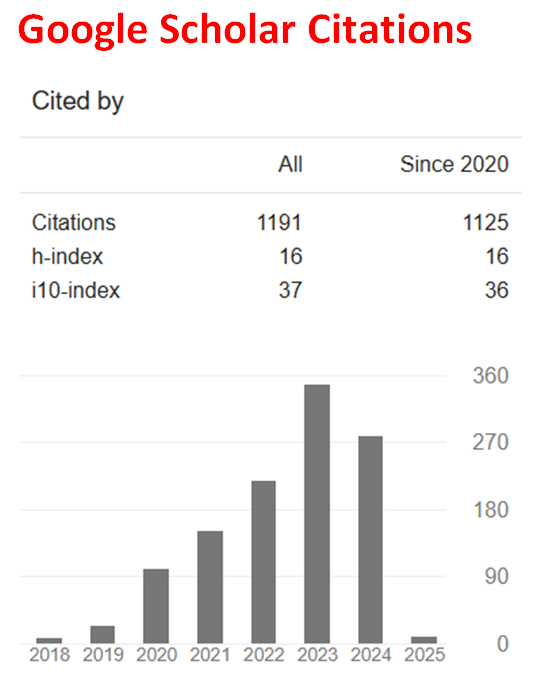Comparison of Stationarity on Ljung Box Test Statistics for Forecasting
Abstract
The movements in Asset prices are very complex, therefore seem to be unpredictable. However, one of the main challenges of the econometric models is to get the best data for forecasting in order to present accurate results. This paper investigates the performance of stationary and non-stationary data on Ljung Box test statistics, to check the fitness of the data for forecasting. In the paper three assets (Groundnut, sorghum and soya bean) are used, tests are conducted for Ljung box statistics; Correlogram, Histogram Normality and Heteroscedasticity test. It is observed that stationary data are better for forecasting than non-stationary data in this research.
Downloads
References
E. Allaj, The Black-Litterman model: a consistent estimation of the parameter tau, Financial Markets and Portfolio Management 27(2) (2013), 217-251. https://doi.org/10.1007/s11408-013-0205-x
D. M. Al-Najjar, Modelling and estimation of volatility using ARCH/GARCH models in Jordan’s stock market, Asian Journal of Finance & Accounting 8(1) (2016), 152-167. https://doi.org/10.5296/ajfa.v8i1.9129
S. Beidas-Strom and A. Pescatori, Oil price volatility and the role of speculation, IMF Working Paper No. 14/218, 2014. https://doi.org/10.2139/ssrn.2561232
M. H. Davis and S. Lleo, A simple procedure for combining expert opinion with statistical estimates to achieve superior portfolio performance, The Journal of Portfolio Management 42(4) (2016), 49 58. https://doi.org/10.3905/jpm.2016.42.4.049
R. F. Engle and B. S. Yoo, Forecasting and testing in co-integrated systems, J. Econometrics 35(1) (2018), 143-159. https://doi.org/10.1016/0304-4076(87)90085-6
A. Ghasemi and S. Zahediasl, Normality tests for statistical analysis: a guide for non-statisticians, International Journal of Endocrinology and Metabolism 10(2) (2012), 486-489. https://doi.org/10.5812/ijem.3505
R. C. Haggins, J. Koski and T. Mitton, Analysis for Financial Management, New York: McGraw Hill Education, 2016.
H. Ince and T. B. Trafalis, A hybrid forecasting model for stock market prediction, Economic Computation and Economic Cybernetics Studies and Research 51 (2017), 263-280.
H. Y. Kim, Statistical notes for clinical researchers: assessing normal distribution (2) using skewness and kurtosis, Restor. Dent. Endod. 38(1) (2013), 52-54. https://doi.org/10.5395/rde.2013.38.1.52
S. Krylov, Applied analysis concept development: financial aspect, European Journal of Accounting Auditing Research 3(5) (2015), 30-54.
H. Manel and A. Chaker, Forecasting crude oil price using artificial neural network, A Literature Survey Econimics Belletin 35(2) (2015), 1339-1359.
M. Schulmerich, Y. M. Leporcher and C. H. Eu, Applied Asset and Risk Management, Springer, 2015. https://doi.org/10.1007/978-3-642-55444-5
J. H. Stock and M. W. Watson, Variable trends in economic time series, J. Econ. Perspect. 2(1) (2015), 147-174. https://doi.org/10.1257/jep.2.3.147
A. Timmermann, Forecasting method in finance, Annual Review of Financial Economics 10 (2018), 449-479. http://dx.doi.org/10.1146/annurev-financial-110217-022713
H. Yanagihara, K. Kamo, S. Imori and M. Yamamura, A study on the bias-correction effect of the AIC for selecting variables in normal multivariate linear regression models under models misspecification, REVSTAT - Statistical J. 15(3) (2017), 299-332.

This work is licensed under a Creative Commons Attribution 4.0 International License.
.jpg)

